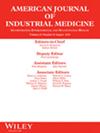Compared to other industry sectors, construction workers experience a disproportionately high rate of occupational injuries and fatalities. As research findings suggest, most of these incidents could be prevented if hazards were proactively recognized and properly addressed. In the construction industry, pre-task planning (PTP) is a preventive process intended to describe each step of work, identify associated safety and health hazards, and recommend controls to eliminate or mitigate the hazards before work begins. Despite its importance, the construction industry lacks comprehensive guidelines to design and implement PTP in a consistent and effective manner. To fill this gap, this study pursued two objectives: (1) identify shortcomings in current PTP practices and explore recommended solutions from practitioners' perspectives and (2) translate research findings into an applied tool to help practitioners assess and improve the quality of their PTP process.
To fill the gap, 28 construction safety and health professionals and 104 workers were interviewed, and seven onsite PTP sessions were directly observed.
Shortcomings of current PTP practices as well as recommended solutions were categorized as (1) planning and implementation, (2) all-trades coordination, (3) engagement and buy-in, (4) training and logistics, (5) workforce diversity and the language barrier, and (6) PTP content accessibility.
An effective PTP process should be based on workers' direct involvement and input on task requirements and hazards. It needs to be regularly updated to reflect the changing work conditions. In addition to task-related information, to increase workers' awareness, PTP should paint a holistic view of the project and other trades' scopes.


